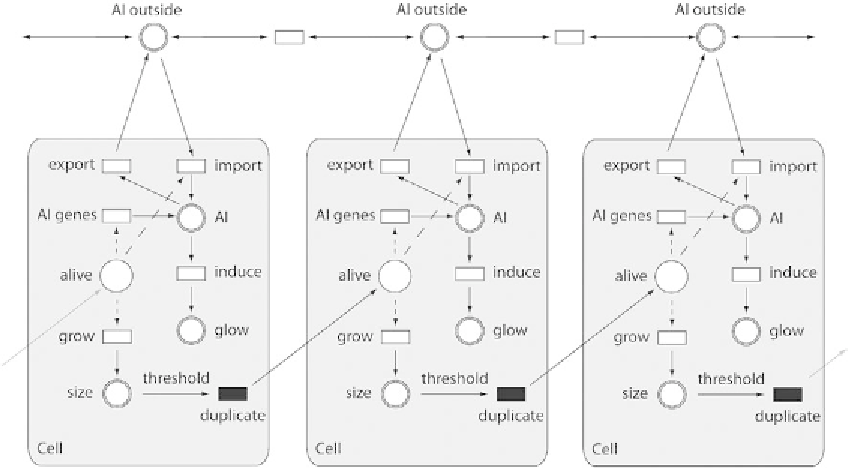Biology Reference
In-Depth Information
Fig. 13. A one-dimensional array of sub Petri nets for including growth in the model*.
and a central motif for the future.
Dynamic models provide a powerful framework for hypothesis generation and testing, and the identifi-
cation of inconsistencies in a model. In general, dynamic modeling permits a range of analytic techniques
that give insight into system level features that emerge from the models elementary interactions.
This field of studies is fascinating and challenging. Regarding signaling networks, it is a great
undertaking not only due to the non-linear network topology. Additionally, the different types of
interactions that the elements of the biochemical networks can undergo are of particular interest and
importance: protein associations, enzymatic catalysis and reversible or irreversible protein modification,
to name only the most common types.
For the development of systems biology and synthetic biology the understanding of cell-to-cell commu-
nication processes is of importance. To understand how this signaling system coordinates individuals in a
cell population is fundamental for understanding molecular mechanisms in general. This understanding
is also essential in designing and building complex synthetic biological systems.
Therefore, we developed and implemented a new information system, VANESA (
http://vanesa.sf.net
)
,
that allows the modeling and editing of pathways and networks. The major idea of this system is to
offer a powerful and easy-to-use molecular network editor to members of the laboratory. Therefore the
biological partner could edit the project data/knowledge including information from written sources.
Furthermore the biological partner could use the extended function of VANESA to realize the semi-
automatic lab-validated extension of this network. To simulate cell-to-cell communication processes, an
automatic translation of the VANESA network into the language of the hybrid Petri nets for the software
application Cell Illustrator (
http://cellillustrator.com/home
)
was implemented.
*A colored version of the figure/chart is available at
In Silico Biol.
10
, 0003 <
http://www.bioinfo.de/isb/2010/10/0003/
>
, 1
Feb uary 2010.
r

